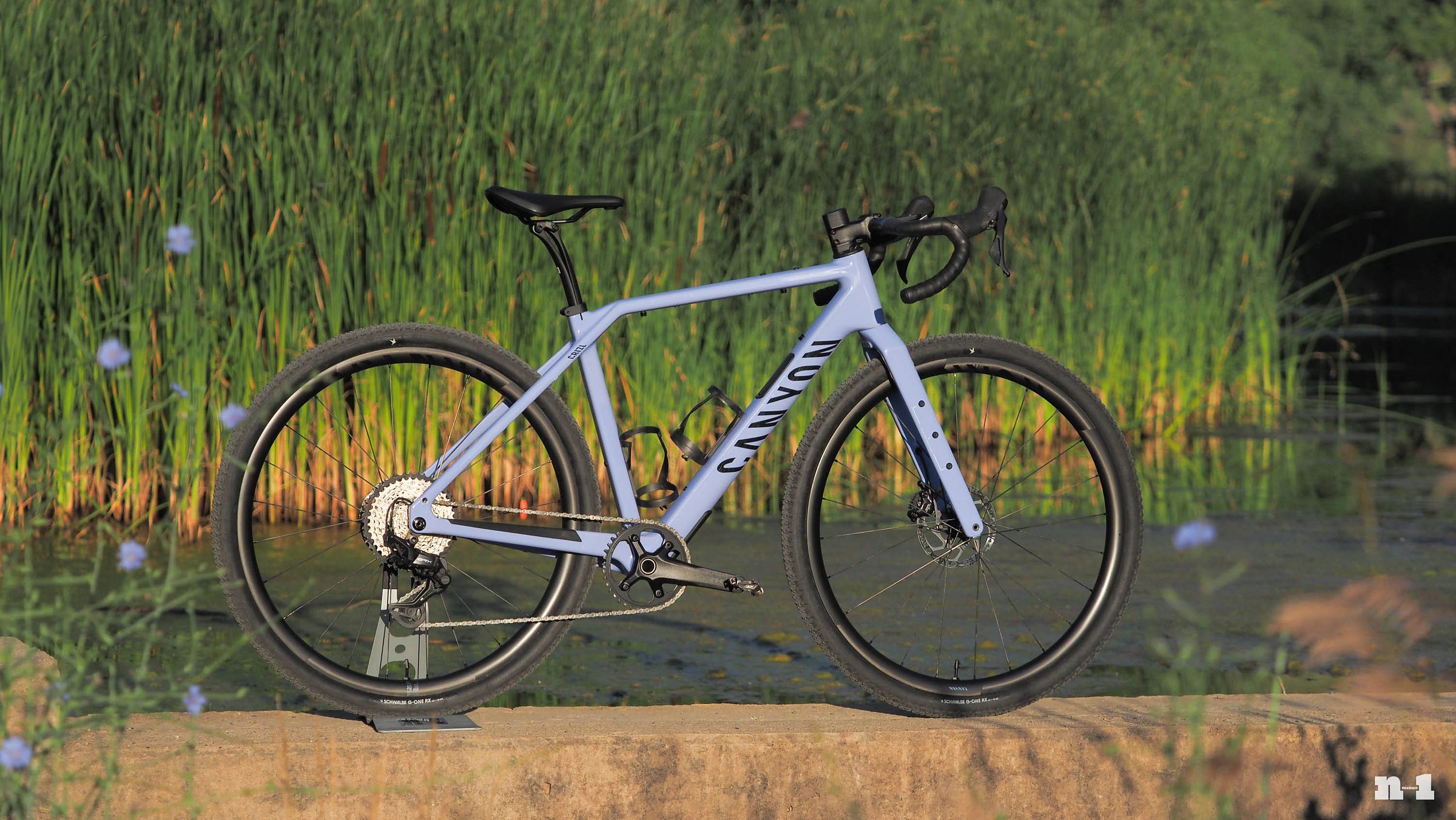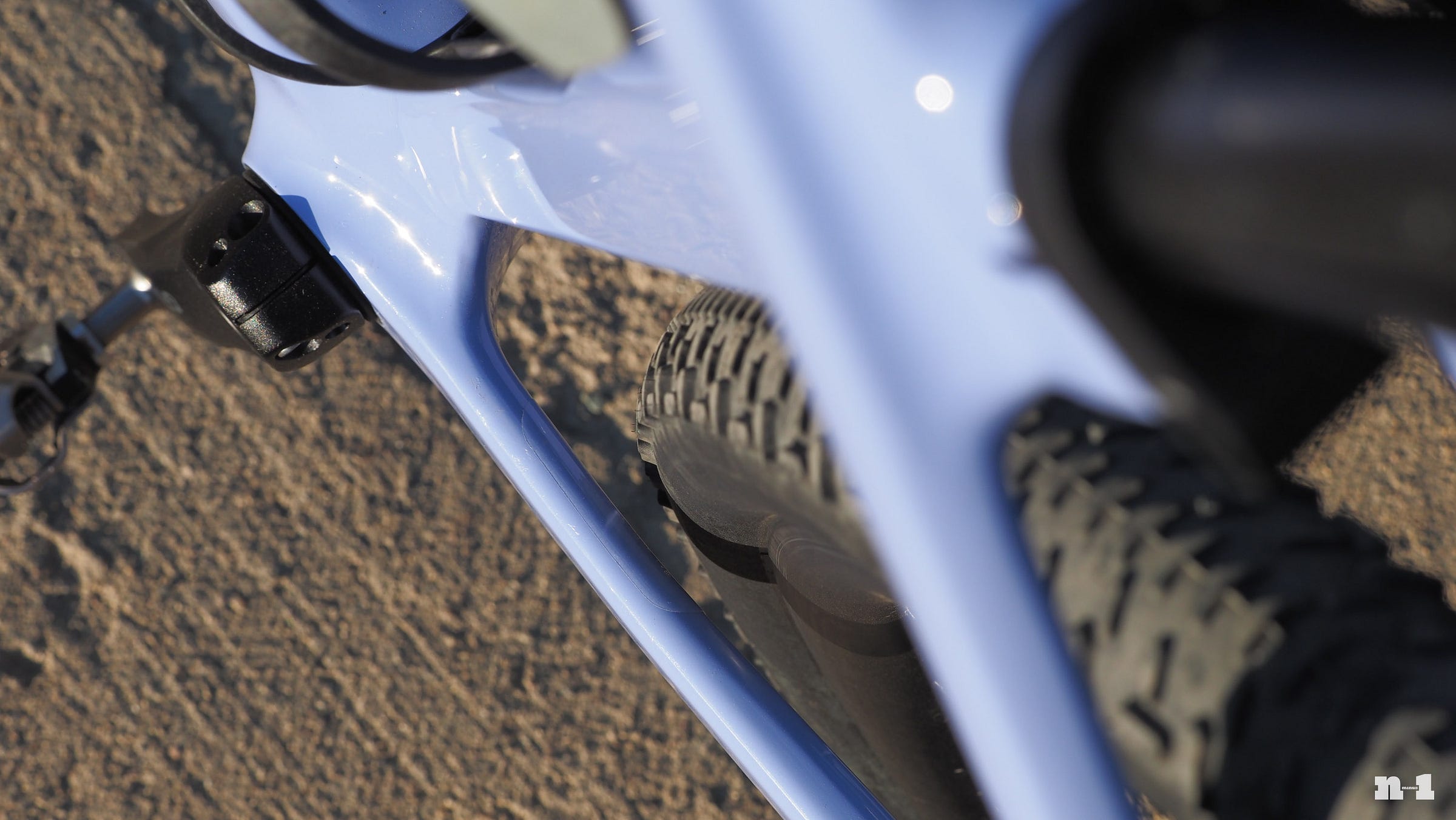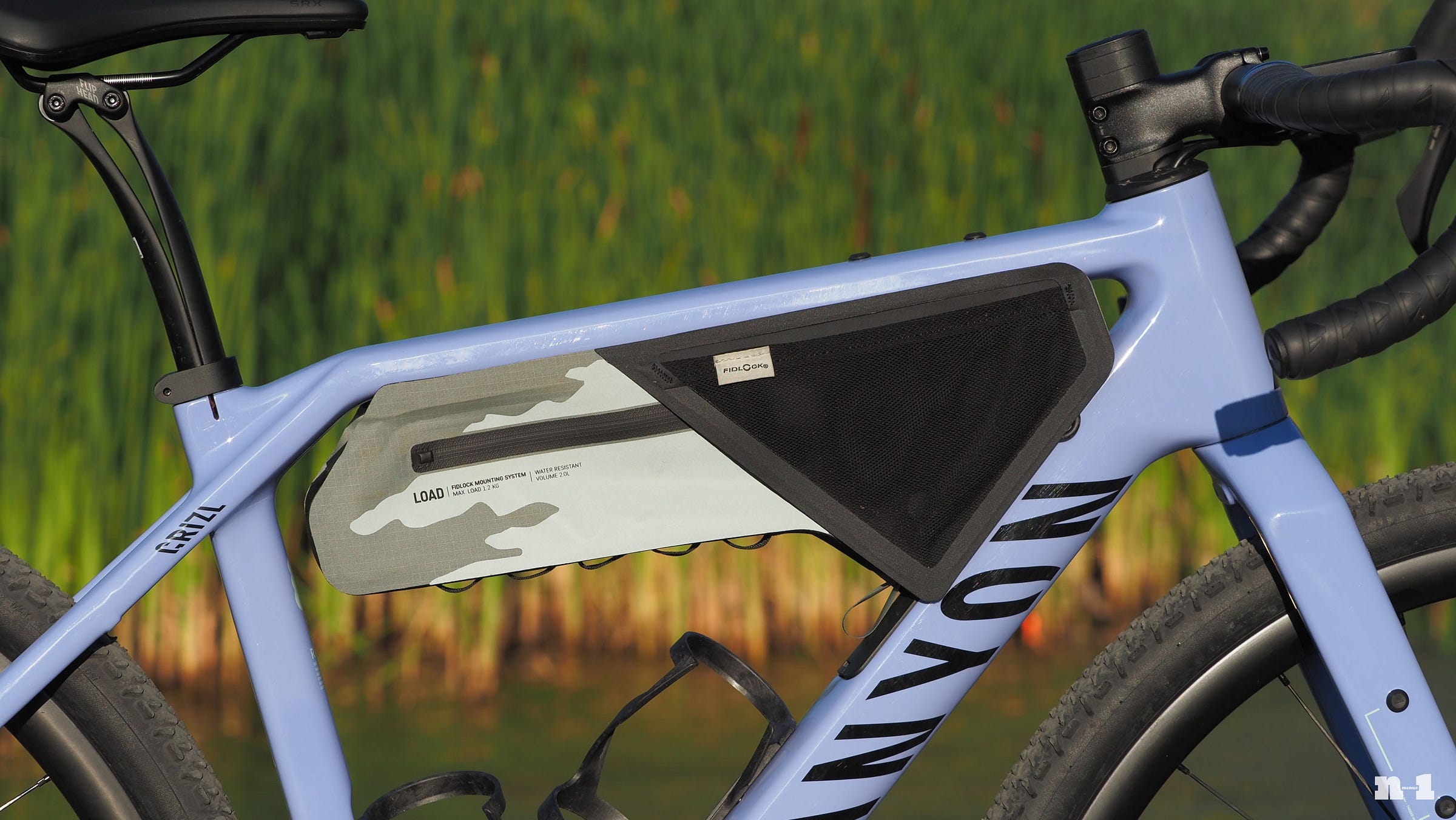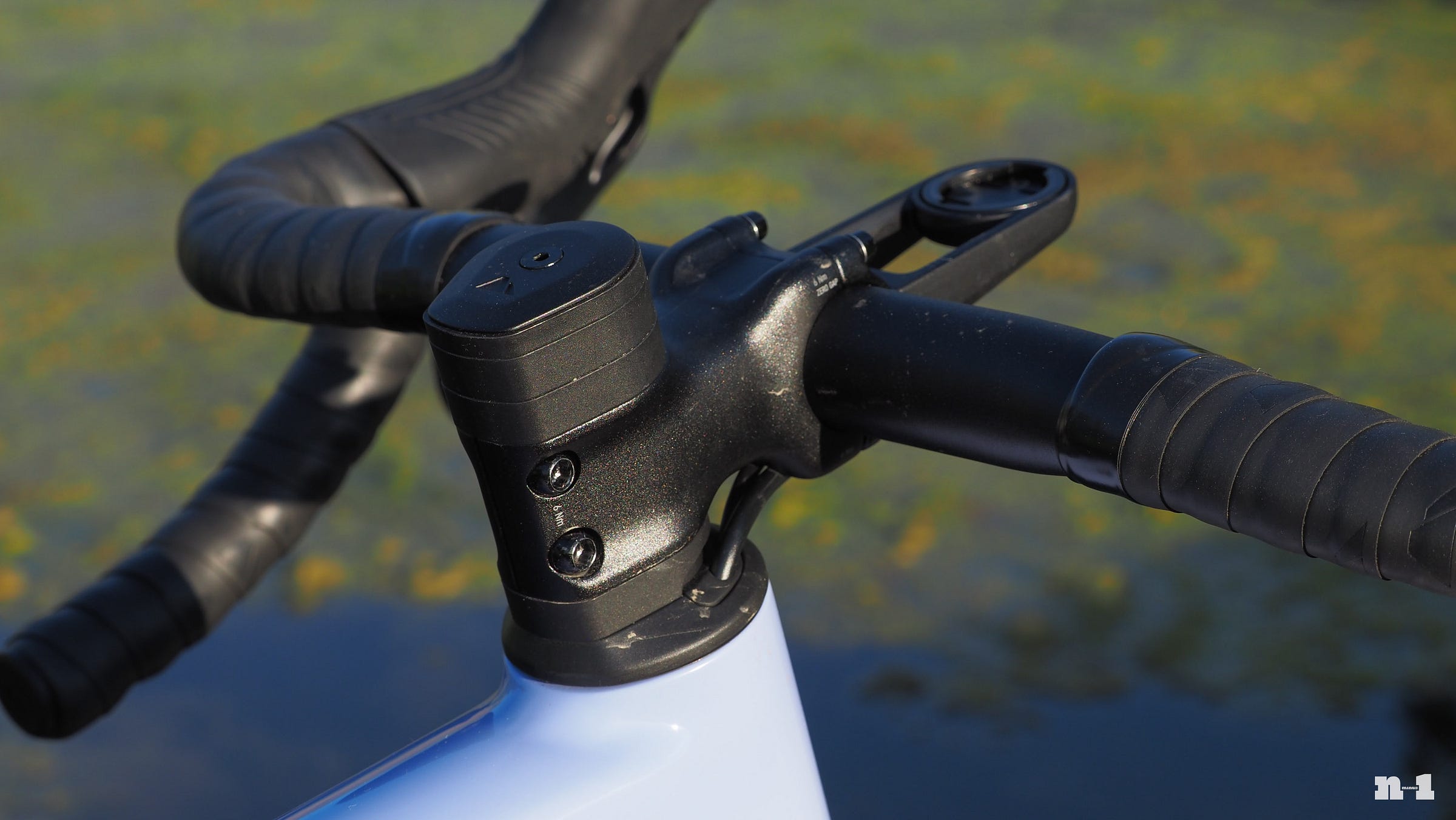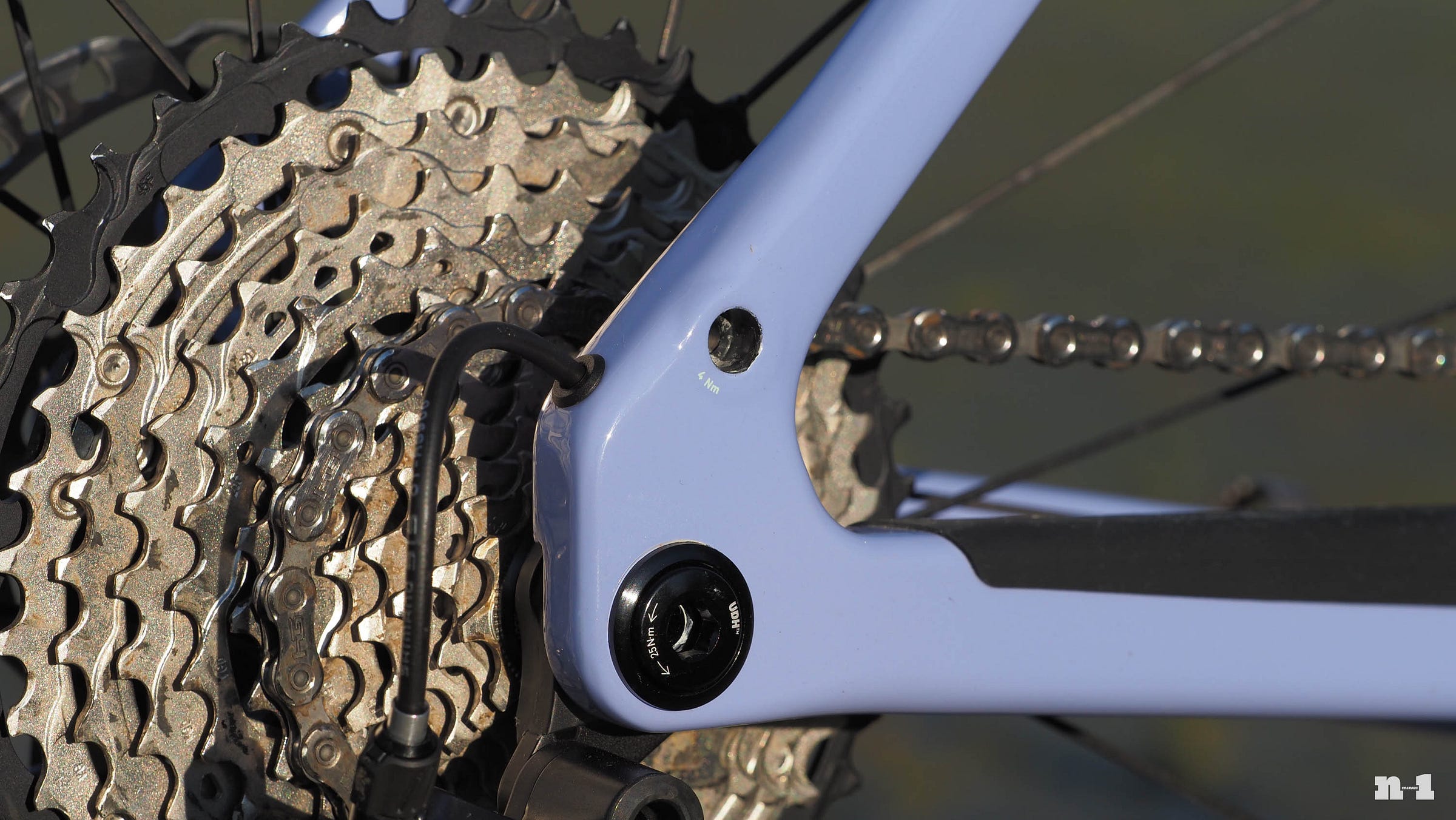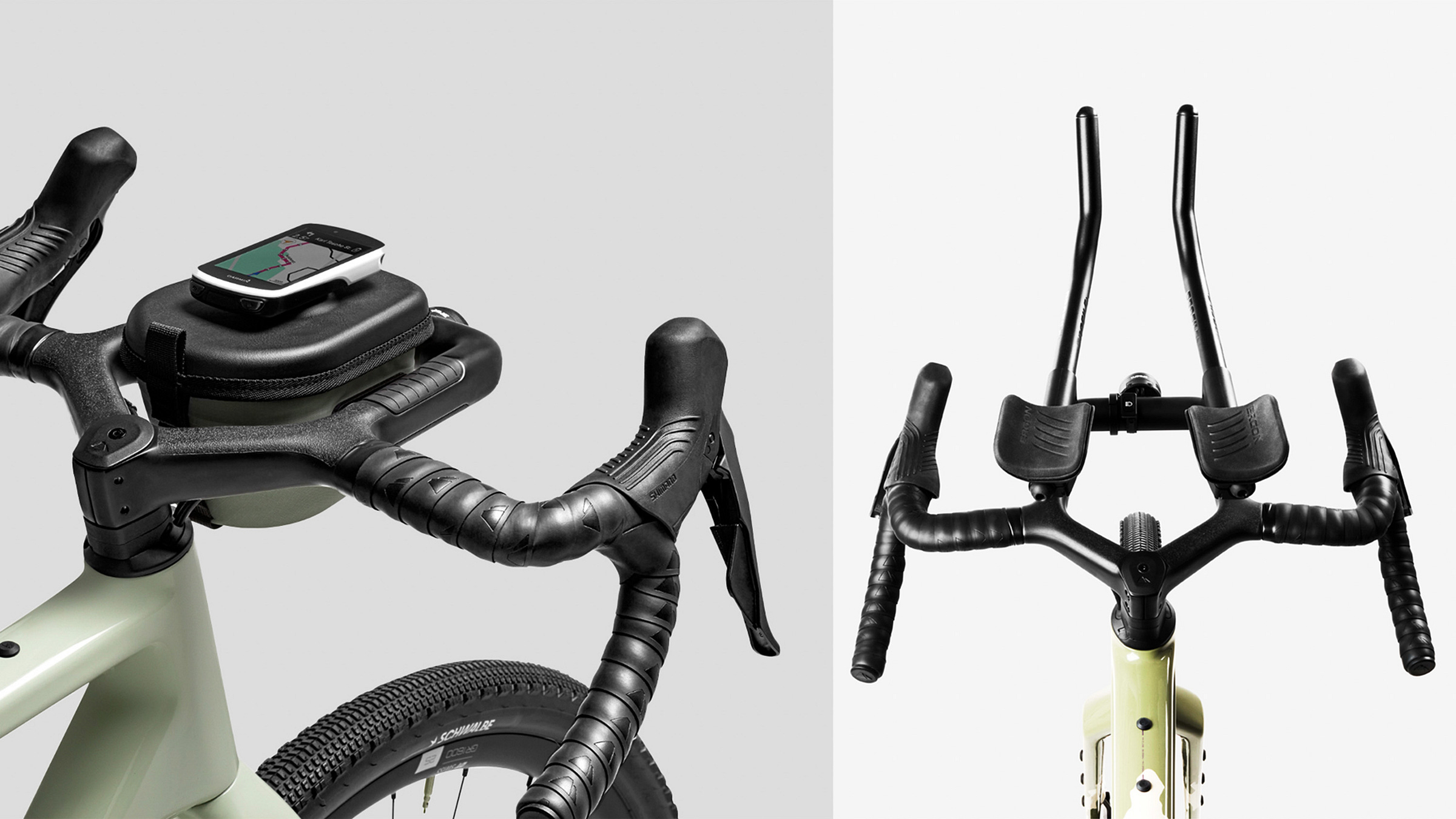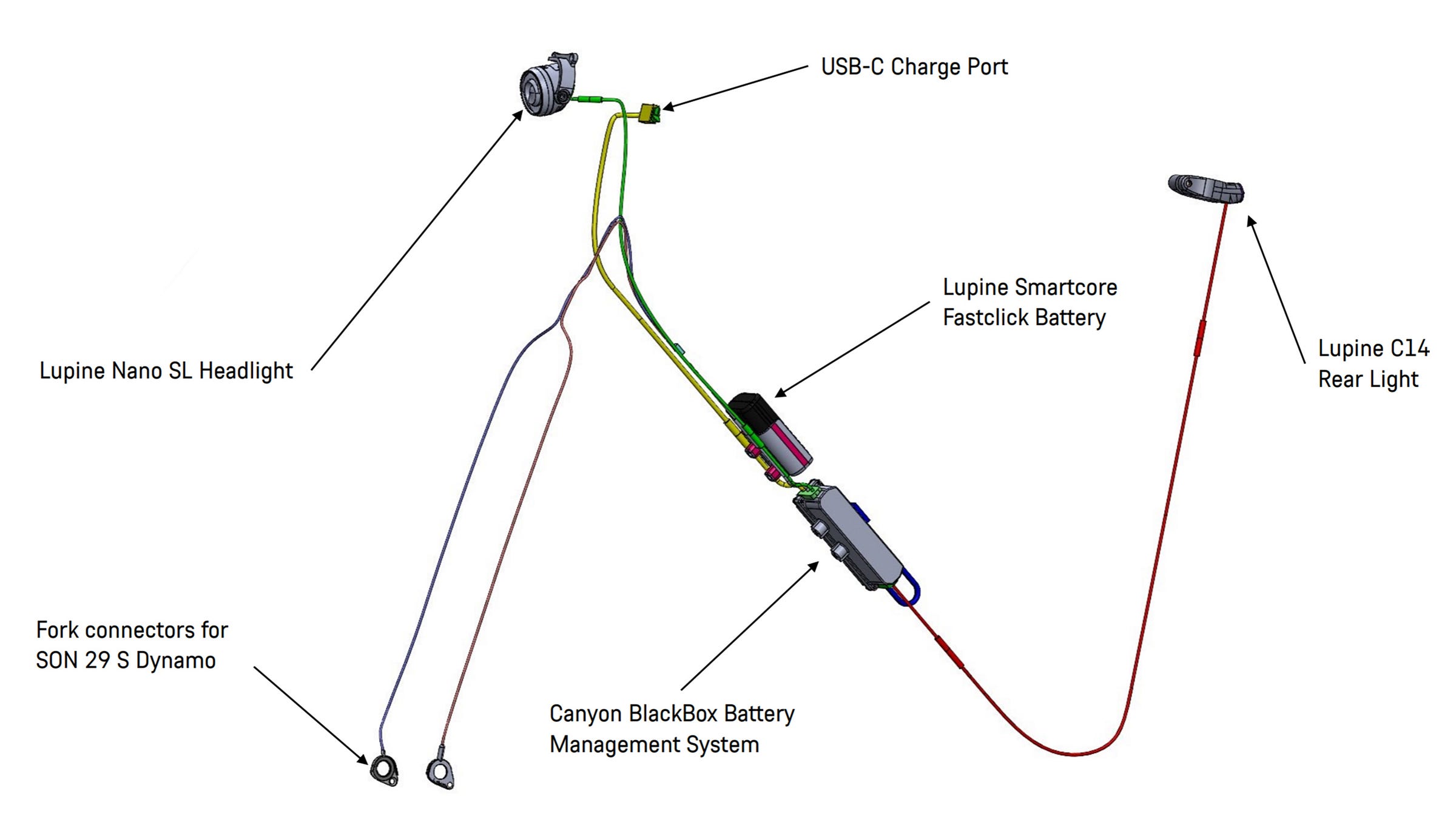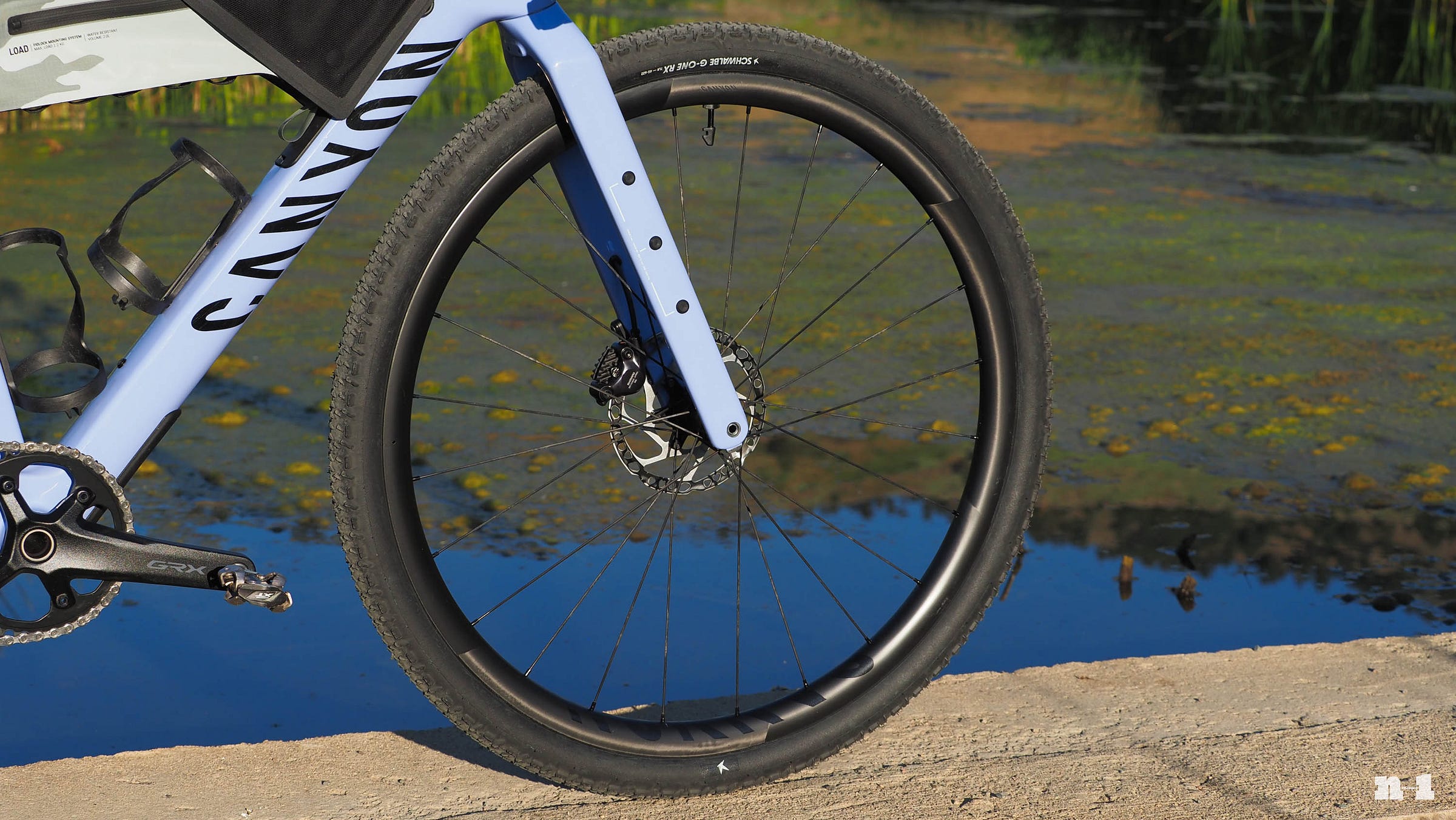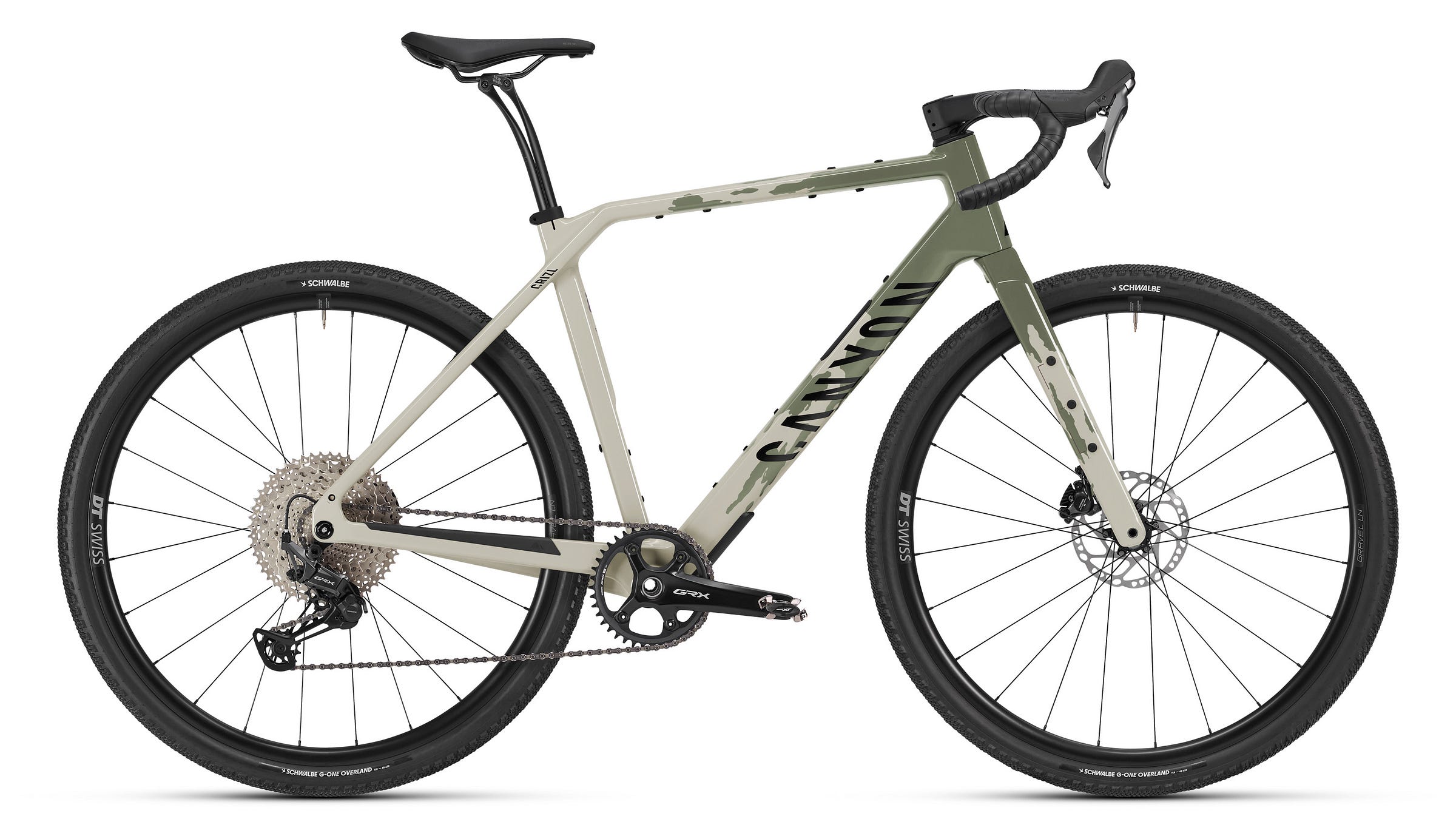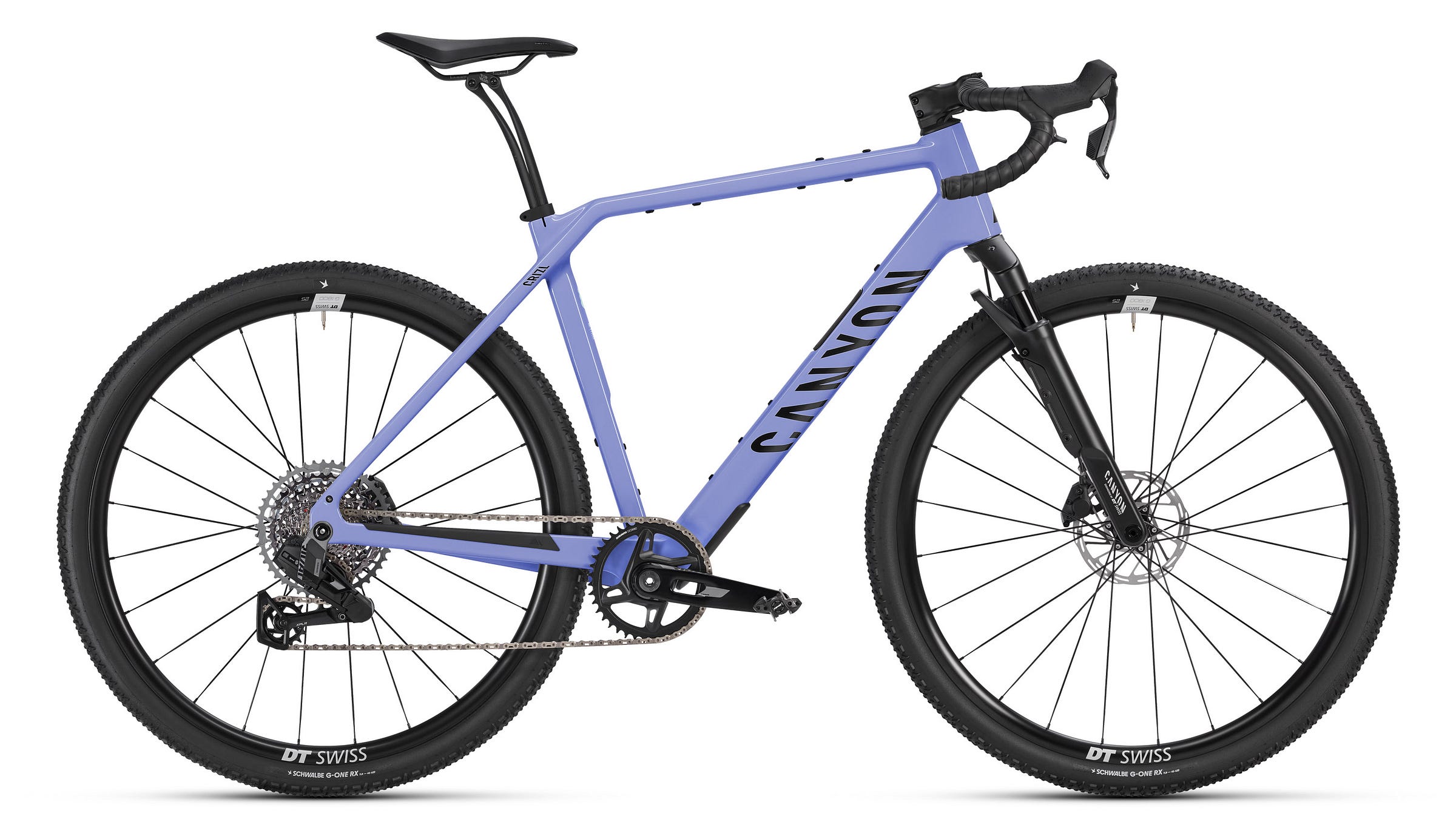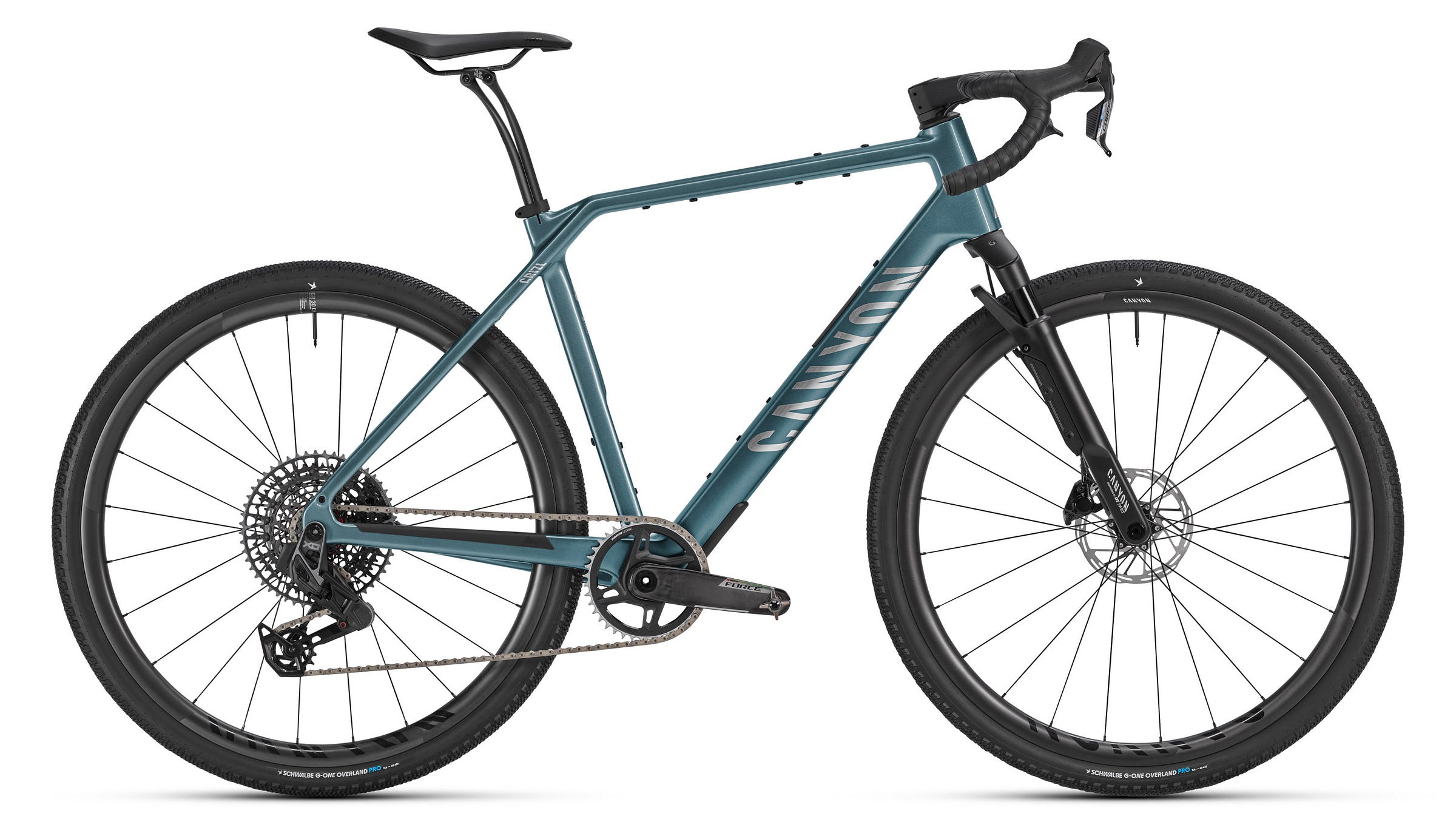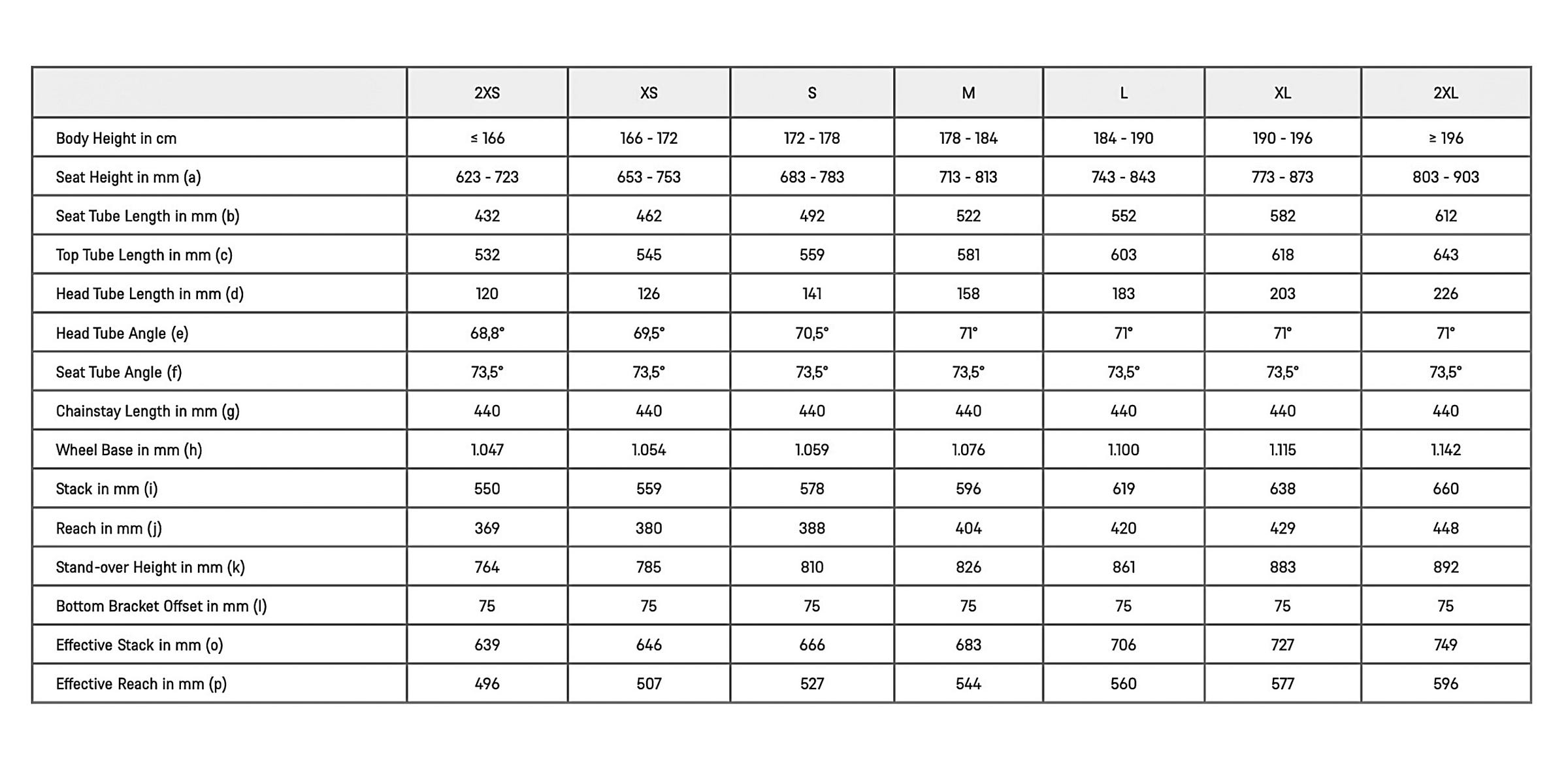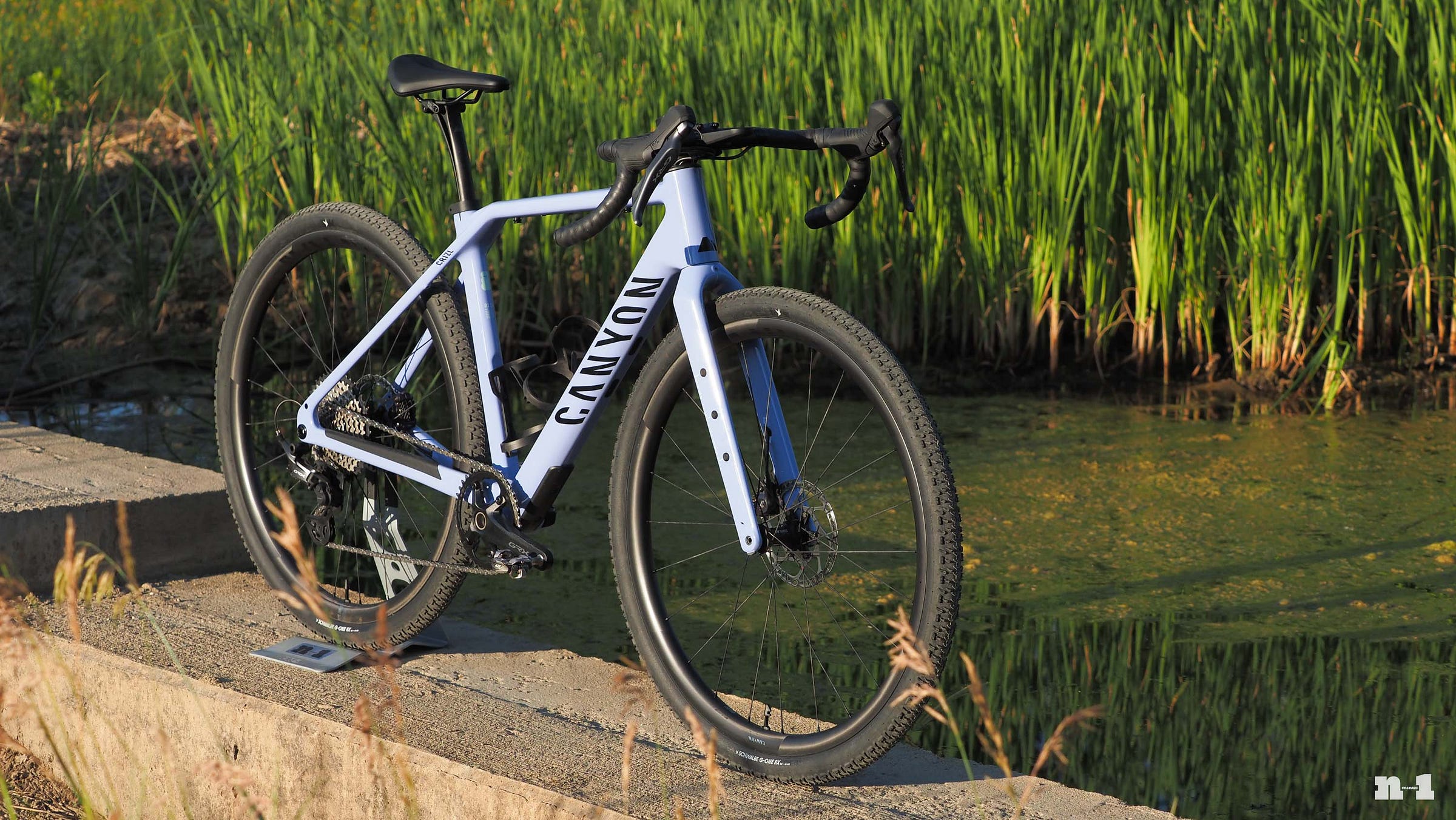2026 Canyon Grizl CF gravel bike review: Embracing do-it-all versatility
Weird handlebars are back, along with dynamo hubs and integrated lighting
Canyon’s range of gravel bikes consists of two distinct families. On the one hand, there’s the more performance-oriented Grail with its lighter weight, aero-focused tubing, and snappier reflexes. And on the other hand, you’ve got the more fun-loving Grizl with its more generous tire clearances, mellower handling and riding position, and penchant for adventure.
Canyon recently doubled down on the performance theme with the latest Grail redesign, and now the new Grizl veers hard enough in the other direction that it’s spawned an even grizzlier offshoot. The new Grizl OG is basically the spiritual successor to the current Grizl that many have come to know and love, but for those who really want to get off the beaten path, there’s a more outlandish Grizl Escape.
I’ve spent the last four weeks on one of the Grizl OG models so that’ll be the main focus of this review, but before we get into that, let’s take a look at the details of the entire Grizl revamp.
Pros: Do-anything and go-anywhere capability, accommodating handling and rider positioning, great tire clearance, tons of accessory mounts, typically aggressive pricing, intriguing Full Mounty cockpit and ECLIPS lighting system.
Cons: Ride quality is still more firm than coddling, proprietary bits are polarizing, too much chain slap, not the most exciting bike to ride.
The takeaway: A fun factory on two wheels.
Up for anything
Canyon made it clear when it introduced the first-generation Grizl in 2021 that it was more about the journey, not the destination. Things like low weight and aerodynamic efficiency were less important than approachable handling and versatility, and those themes continue on with the redesign of the carbon fiber Grizl (changes to the aluminum Grizl AL haven’t yet been announced).
Tire clearance has – of course – increased, with room for 700x54 mm-wide tires front and rear as compared to the original Grizl’s already-generous 50 mm. Frame geometry has been revised for additional stability and a more relaxed fit, with a slacker head tube angle, taller stack height, longer chainstays, and a longer wheelbase in general. And whereas the two smallest of the Grizl’s seven available sizes were once stuck with 650b wheels and tires, the new Grizl is 700c across the board, making it easier to source good-quality wheels and tires.
Something that won’t show up on the geometry chart is the redesigned frame shape, which sports a taller front triangle and a bit of a humpbacked profile similar to Canyon’s Inflite cyclocross bike. While the Inflite’s distinctly kinked top tube is intended to ease shouldering on running sections, here the purpose is to create more room in the main triangle for frame bags. Canyon’s even developed its own frame bag just for the new Grizl, which attaches to dedicated hard points and uses Fidlock’s quick-release hardware for a clean, strap-free installation. Even on my small-sized test sample, there’s still ample room for one large and one small water bottle with the bag installed – quite the feat.
Another defining feature of the new Grizl is a plethora of mounts in general. In addition to those dedicated bag mounts (which can also be used for other things), there are conventionally located spots for up to three water bottles, a top tube bag, front and rear fenders (which will still accept 50 mm-wide tires), and front and rear cargo racks. In total, there are 23 threaded holes in all, and since most of those use standard bottle cage mount spacing, you could actually hold up to eight bottles if that was your priority.
You won’t have to figure out where to attach a repair kit, either, as there’s also now internal frame storage in the down tube – albeit in a more unusual location up high, just behind the head tube. Nevertheless, the plastic hatch has dedicated clips for a multi-tool and mini-pump, and the included storage sleeve has room for a spare tube, tire levers, plug kit, and other essentials.
There are some caveats, of course. Canyon of course says its own racks and fenders will provide the best fit on the new Grizl, and while it’s easier than ever to attach a big handlebar bag, making that happen prompted Canyon to route the control lines through the upper headset cover. On the upside, those ports seem better sealed than most, and while headset bearing replacement will still require fairly major surgery, Canyon has at least upgraded to stainless steel bearings for improved corrosion resistance.
Other changes include UDH-compatible rear dropouts, a conventional external aluminum seatpost clamp in place of the old hidden wedge-type binder, a switch to 1x-only drivetrains (the old Grizl was compatible with front derailleurs), and a standard 1 1/8”-diameter round tapered steerer tube in place of the old Grizl’s Canyon-signature 1 1/4” one. Down below, Canyon is sticking with its long-preferred PF86 press-fit bottom bracket shell, saying it not only affords more tire clearance than English-threaded ones, but is also more reliable since there are no aluminum parts that can potentially come unbonded. Canyon says its bottom bracket shells are also milled post-molding for proper cup fitment, and that every single frame is checked for proper dimensional tolerances.
Wondering about frame weight? Despite the new Grizl featuring a supposedly tougher layup for better impact protection, it hasn’t changed much – sort of. Canyon says a new medium Grizl frame comes in at 1,110 g including paint and “all small parts,” as compared to 1,143 g for the previous Grizl CF SL under the same conditions. However, the previous Grizl CF SLX (which was about 100 g lighter than the SL) is gone, and all carbon fiber Grizls are now built around the same frame and fork.
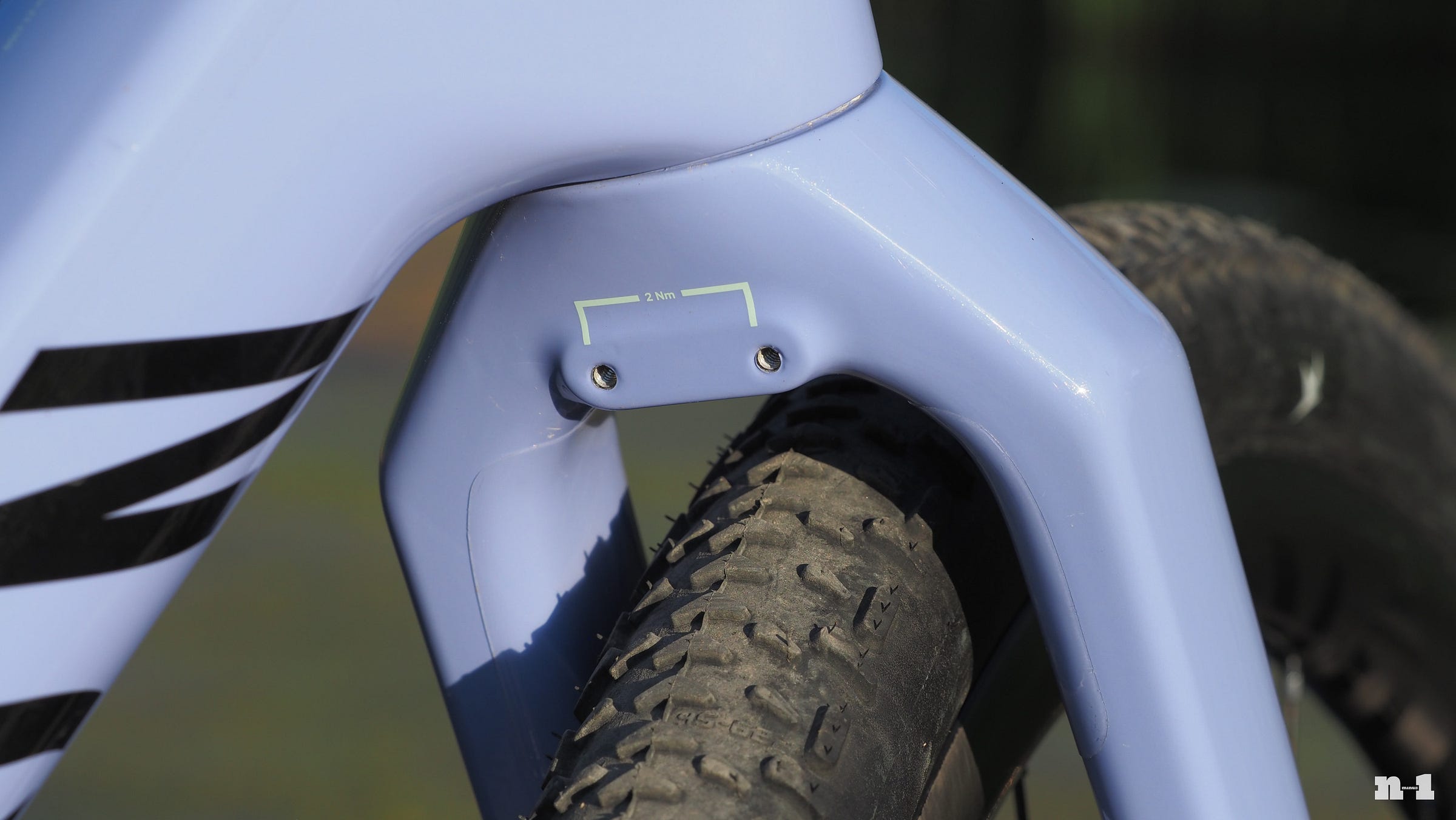
Realistically speaking, my guess is most prospective Grizl buyers won’t miss the SLX version that much – if they even knew it existed in the first place.
Two for the price of one
As I mentioned early on, the Grizl range has split in two, and both variants are built around the same carbon fiber frameset.
The so-called Grizl OG (“the Original Graveller”) is the more normal of the two by far. Grizl OG models are equipped with conventional two-piece bars and stems, 1x drivetrains with more gravel-specific gearing (i.e. 10-44T, 10-45T, or 10-46T cassettes), and faster-rolling 45 mm-wide Schwalbe G-One RX tires. According to Canyon, these are meant for your run-of-the-mill single-day rides in daylight hours and carrying minimal gear.
The Grizl Escape, on the other hand, is aimed at multi-day jaunts on more varied terrain. As part of that, Canyon outfits these models with mullet-style drivetrains (with wider-range mountain bike cassettes) and knobbier Schwalbe G-One Overland tires (still in a 700x45 mm size). By far the bigger differences, however, are the built-in lights and so-called “Full Mounty” cockpit.
In concept, the Full Mounty isn’t all that different from existing bars like the Redshift Sports Kitchen Sink or Farr Aero Gravel in that it directly incorporates a mini-aerobar loop on to a set of flared drops. The Full Mounty is the first one I can recall being made of carbon fiber, though, and Canyon has also gone all-in on the cockpit concept with an integrated stem. The point of the Full Mounty isn’t dropping weight (although it is fairly light at less than 400 g); it also offers additional cargo mounts, there are options for proper bolt-on aero extensions and a dedicated bag, and the forward portion uses a standard 31.8 mm-diameter round cross-section for attaching whatever else you deem necessary. Canyon says the sky is pretty much the limit, too, as the Full Mounty is supposedly rated to hold about 50 kg of stuff.
Certain Grizl models will feature Canyon’s new ECLIPS package (“Endless Charge and Lighting Integrated Power System”). The integrated lighting system features a 900-lumen Lupine SL Nano LED headlamp on the bars and a custom Lupine C14 LED taillight integrated into the Grizl’s aluminum seatpost collar. Power is supplied by a customized SON 29 S front hub dynamo that supposedly draws just 3.2 W of rider energy when generating power (or 0.2 W otherwise), and there are special fork tips with integrated electrical contacts that don’t require you to fiddle with delicate wire connections when installing or removing the wheel.
ECLIPS-equipped riders won’t have to worry about their lights flickering or dimming when stopped, either, as there’s also a 3,500 mAh Lupine Smartcore “buffer” battery hidden inside the down tube that helps to maintain a constant output and acts as a power bank, all managed by Canyon’s proprietary BlackBox Battery Management System electronics. Canyon says riding at just 15 km/h (9.3 mph) will keep the lights running at the low setting in perpetuity, or it’ll add 12% of battery capacity per hour when moving at 20 km/h (12.4 mph). A USB-C port built into the headset cover allows you to continuously charge accessories on the go, too, and you can also draw power from the power bank while camped overnight.
Not surprisingly given Canyon’s location, neither light can be operated in a daytime flashing mode given Germany’s stringent STVZO guidelines, and the battery and electronics module unfortunately fill up the storage compartment in the down tube so your repair essentials will have to go elsewhere. Canyon says ECLIPS will also add about 600 g, and because of all the wiring involved, it’s not something that can easily added or removed after the fact.
But wait, there’s more!
The Full Mounty isn’t the only new component Canyon is launching on the new Grail; it’s also using its revamped gravel bike to debut its first developed-in-house wheels. Mavic’s former head of product management, Maxime Brunand, joined Canyon in 2023 after more than a quarter-century at the iconic French brand, and the new GR 30 CF gravel wheelset is the first piece of fruit to fall from that recently planted tree.
The GR 30 CF features hookless carbon fiber rims with a 27 mm internal width, 33 mm external width, 30 mm semi-aero depth, and broad, flat edges that are designed to minimize pinch flats. Long-time supplier DT Swiss is hardly being abandoned here, as those rims are laced with DT Swiss Aerocomp bladed stainless steel spokes and external nipples (24-hole front and rear) to proven DT Swiss 350 hubs outfitted with 36-tooth ratchet rings for a 10° engagement speed. Claimed weight is right around 1,600 g for the pair.
Aside from the slightly wider-than-usual internal width, these sound like nothing particularly special, right? Perhaps, but in typical Canyon fashion, they’re also aggressively priced at £1,290 / €1,350 / AU$2,020, including a six-year warranty and a discounted crash replacement program – pretty good for carbon wheels from a major brand that are built around DT Swiss 350 hubs, so we’ll see how these go.
Not available in (all) stores
Canyon will offer five versions of the Grizl OG and three builds of the Grizl Escape, some with suspension, some with ECLIPS, some with both, some with neither. The range feels a little haphazard to me, but brief specs, claimed weights, and prices are as follows regardless:
Grizl CF 6 (US$2,800 / £2,250 / €2,500 / AU$4,050; 9.98 kg / 22.00 lb): SRAM Apex XPLR 1x12 mechanical groupset, DT Swiss Gravel LN aluminum wheels.
Grizl CF 7 (US$n/a / £2,500 / €3,000 / AU$4,200; 10.04 kg / 22.13 lb): Shimano GRX 820 1x12 mechanical groupset, DT Swiss Gravel LN aluminum wheels.
Grizl CF 7 ESC (US$3,400 / £2,800 / €3,500 / AU$4,650; 9.94 kg / 21.91 lb): Shimano GRX 820 1x12 mechanical mullet groupset, DT Swiss Gravel LN aluminum wheelset, Canyon CP0050 Full Mounty cockpit.
Grizl CF 8 RIFT (US$n/a / £3,300 / €4,000 / AU$5,800; 10.05 kg / 22.16 lb): SRAM Rival AXS XPLR 1x13 wireless electronic groupset, DT Swiss F 132 One suspension fork, DT Swiss G1800 aluminum wheels.
Grizl CF 8 ESC ECLIPS (US$4,700 / £4,000 / €4,500 / AU$7,100; 10.00 kg / 22.05 lb): Shimano GRX 1x12 mechanical mullet groupset, ECLIPS lighting system, DT Swiss GR1600 aluminum wheels, Canyon CP0050 Full Mounty cockpit.
Grizl CF 8 Di2 (US$n/a / £4,650 / €5,000 / AU$8,250; 9.16 kg / 20.19 lb): Shimano GRX Di2 1x12 wireless electronic groupset, Canyon GR 30 CF carbon wheels.
Grizl CF 9 ESC Rift (US$n/a / £6,500 / €7,000 / AU$11,450; 9.84 kg / 21.69 lb): SRAM Force AXS/XO Eagle Transmission 1x12 wireless electronic mullet groupset, DT Swiss F132 One suspension fork, Canyon GR 30 CR carbon wheels, Canyon CP0050 Full Mounty cockpit.
Grizl CF 9 ECLIPS (US$n/a / £7,450 / €8,000 / AU$13,100; 8.84 kg / 19.49 lb): SRAM Red AXS XPLR 1x13 wireless electronic groupset, ECLIPS lighting system, DT Swiss GRC 1400 carbon wheels.
Notice a bunch of “US$n/a” sprinkled in there? Yep, while the United States is widely considered to be the birthplace of modern gravel riding, most of the new Grizl models unfortunately won’t be sold there.
Ride review
I didn’t attend the launch event that Canyon held in early May in Girona, Spain, so my first experience on the new Grizl unfortunately came later than most. But as the saying goes, good things come to those who wait, and instead of the short single-day test ride that most event attendees got, I was instead treated to a long-term Grizl CF 7 test bike that was delivered directly to me in early June that I’ve been riding continuously for the past four weeks. Canyon saw fit to upgrade it with its new GR 30 CF wheels, too.
Actual weight for my small-sized sample was 9.31 kg (20.53 lb) without pedals or accessories, and were this model sold here in the United States, I’d estimate the retail price would be somewhere around US$4,000 with the wheel upgrade.
So how is it? To be perfectly honest, it’s… fine.
Keep reading with a 7-day free trial
Subscribe to n-1 to keep reading this post and get 7 days of free access to the full post archives.





